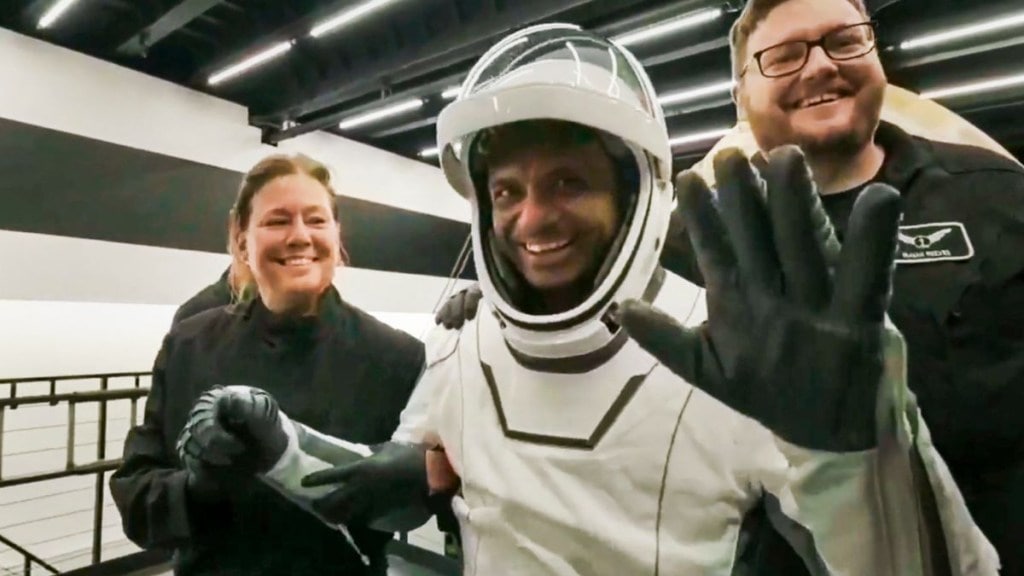The Indian Space Research Organisation (ISRO) has welcomed back astronaut and IAF Group Captain Shubhanshu Shukla after his return to Earth from the Axiom-4 Mission. Over 20 days and a journey spanning 12 million kilometres, the mission carried out ISRO-led biological research experiments in space. Securing Shukla’s seat aboard the SpaceX Dragon cost ISRO over Rs 500 crore, about Rs 100 crore more than the organisation’s Mars mission undertaken more than a decade ago in 2013.
The two missions, however, are not parallel. The major difference is that the Mars Orbiter Mission (MOM) conducted unmanned monitoring from Mars, while the Ax-4 Mission made scientific discoveries in the International Space Station (ISS).
What did the Mars Orbiter Mission (MOM) achieve?
The MOM was inserted into the Mars orbit in 2014. It was the first interplanetary mission and the first Indian spacecraft to incorporate full-scale on-board autonomy. It successfully survived the Van Allen belt 39 times. It was the first Mars mission in the world to succeed in Mars Orbit Insertion on the first attempt. Moreover, it proved to be the most economical interplanetary mission in the world and paved the way for cost-effective access to deep space. The launch vehicle, Spacecraft, and Ground Segment have been realised with a budget of Rs 450 crore.
MOM had a planned lifespan of 6 months, with a reserve of 37 kg of propellant available in the satellite. Replying to criticism from foreign media, ISRO Chairman K Radhakrishnan had said, “We are not in a race with anyone. We are in a race with ourselves.” Referring to its applications, ISRO attributed the MOM satellites that helped evacuate cyclone-hit Odisha, claiming its “people-centric” tag.
Shubhanshu Shukla on Axiom-4 Mission
Meanwhile, Shubhanshu Shukla, the only Indian in the SpaceX Dragon crew, set foot on International Space Station and scripted history. ISRO paid Rs 550 crore to secure a seat for group captain and lead pilot on the Axiom-4 Mission, BBC reported, making this manned mission a step towards the future of research.
Shukla became the first Indian in 40 years, right after Wing Commander Rakesh Sharma, along with three other Indian Air Force officers, for Gaganyaan. ISRO also helped avoid a space disaster after it identified a liquid oxygen leak during refurbishment. With the efforts of Dr. Narayanan, Falcon 9 was able to facilitate a successful lift-off and carry out the Ax-4 mission with no technical faults.
Achievements of the Ax-4 crew
Being a part of a commercial human space flight, Shukla was engaged deeply with research institutions under the Human Space Flight Centre’s (HSFC) coordination. These experiments explored muscle regeneration, algal growth, crop viability, microbial survivability, cognitive performance in space, and the behaviour of cyanobacteria, each aimed at enhancing understanding of human spaceflight and microgravity science.
Developing space microalgae, Shukla also studied Myogenesis and even looked into the microgravity growth of lentil and fenugreek. Tardigrades helped explore resilience and how organisms survive harsh conditions. These experiments and more were all in partnership with leading institutions of India. Not only was he involved in conducting these experiments up close, but he also conducted public outreach with PM Modi and interacted with students in real time.
Shukla worked closely with the members of Expedition 73, already present on the ISS. Supporting joint science, maintenance, and outreach efforts, he participated in integrated crew timelines, shared resources aboard the Harmony module, and coordinated multiple crossover activities, fostering international cooperation in space.

